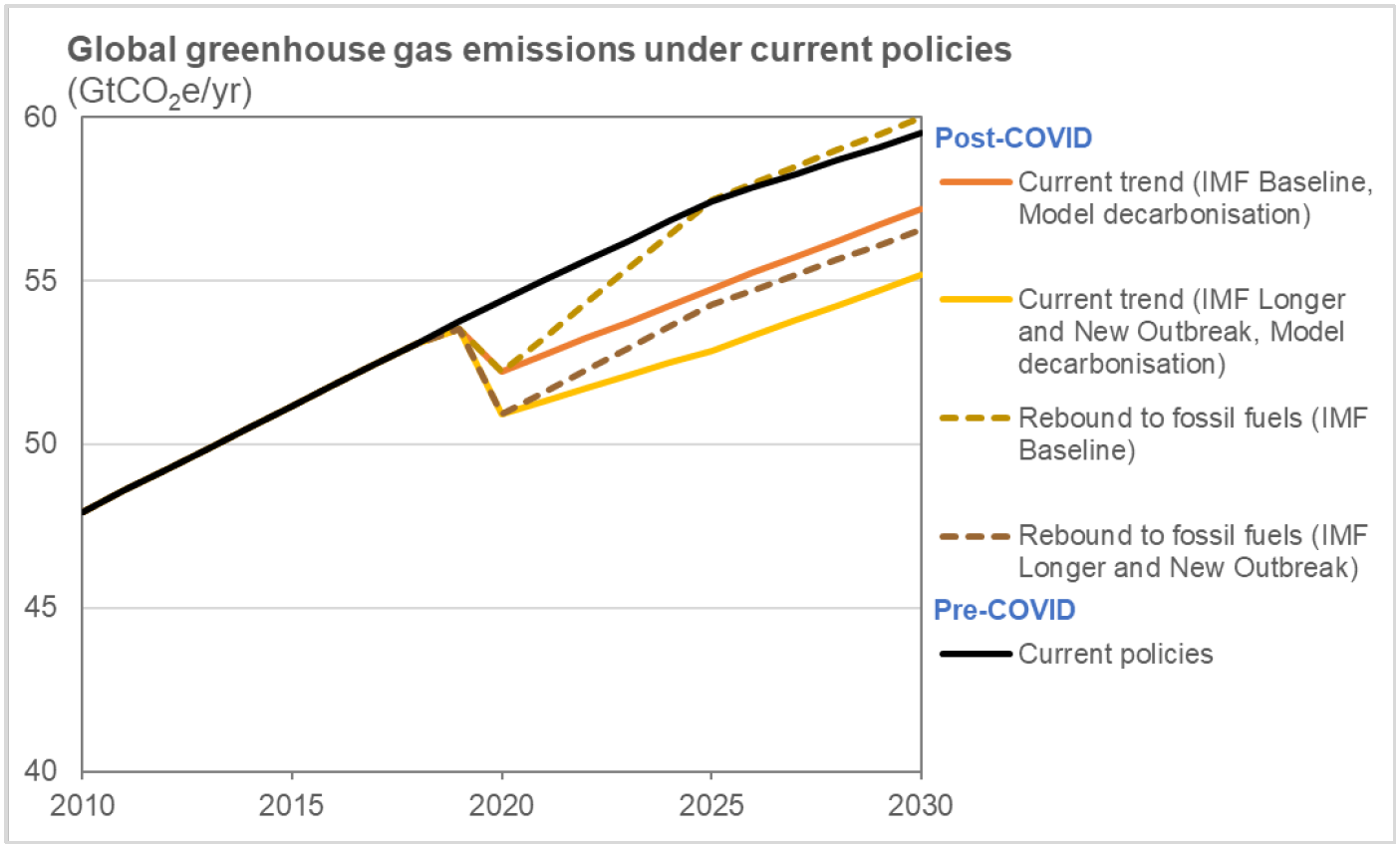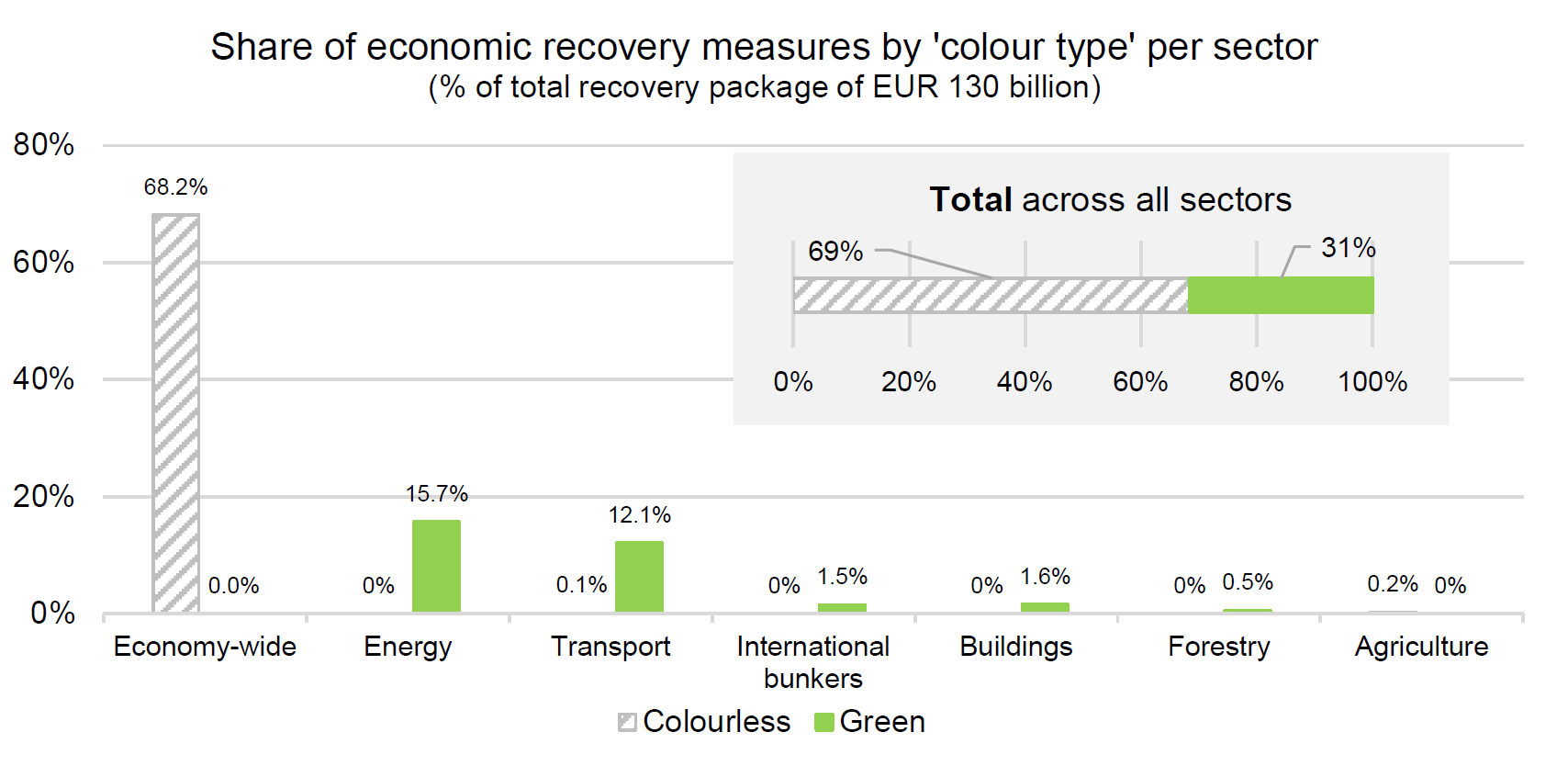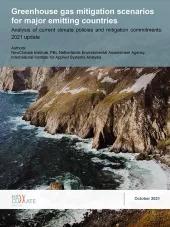This report assesses the implications of the COVID-19 pandemic and associated recovery measures on emissions out to 2030 and global emission pathways towards meeting the Paris climate goals (‘what-if’ scenarios). Furthermore, the study reviews the most recent insights published in the literature on post-COVID emissions projections and green recovery trajectories, and provide a framework for analysing the ‘greenness’ of recovery packages, using Germany as a case study.
Main Findings:
This report assesses the implications of the COVID-19 pandemic and associated recovery measures on emissions out to 2030 and global emission pathways towards meeting the Paris climate goals (‘what-if’ scenarios). For the longer term, this study's ex-post calculations indicate a global emission reduction in 2030 of –2.5 to –4.5 GtCO2e (–4% to –7%), compared to pre-COVID current policy projections, for IMF’s Baseline and Longer and New Outbreak scenario, respectively. These numbers are based on IMF’s (April 2020) GDP projections for 2020-2024 and model decarbonisation rates. However, in case of a rebound to fossil fuels, with lower decarbonisation rates, the emission reduction in 2030 is projected to be smaller (–3.0 instead of –4.5 GtCO2e in the Longer and New Outbreak scenario) or may even turn into an increase (+0.5 instead of –2.5 GtCO2e in the Baseline scenario).
Figure 1. Global total greenhouse gas emissions (median estimates) in the current policies scenario for 2010-2030, for various scenarios related to the COVID-19 pandemic.
Based on data and projections of the IEA and Global Carbon Project published in April and May 2020, the report median estimate for the global CO2 emission reduction in 2020, compared to 2019 levels, is –8% in case of prolonged lockdowns worldwide until the end of 2020, and –4% to –5% if lockdowns are shorter and Europe and North America recover faster in the second half of 2020. At this point, the COVID-19 pandemic is expected to have little effect on estimates of the 2030 GHG emission levels consistent with a least-cost pathway in line with the Paris Agreement goals, as the 2020 drop in emissions is not due to structural changes. While the CO2 emissions reduction in 2020 is probably unprecedented, a consistent, similar rate of decrease would need to be maintained for decades in order to achieve the 1.5 °C warming limit. Low-carbon development needs to play a key role in countries’ recovery strategies to avoid that emissions. Furthermore, the study reviews the most recent insights published in the literature on post-COVID emissions projections and green recovery trajectories, and provide a framework for analysing the ‘greenness’ of recovery packages, using Germany as a case study. Assessing the effect of the fiscal stimulus packages announced by governments in response to the pandemic requires an in-depth analysis of individual measures. To this end, we propose a classification defining ‘green’, ‘grey’ and ‘colourless’ measures (both sector-specific and economy-wide). Besides tracking incoming economic recovery packages, attention should focus on how to account for the environmental effects of additional rescue measures such as airline bailouts, how to include non-budgeted measures, and how to account for regulatory roll-backs.
Figure 2. Economic recovery measures in Germany’s fiscal stimulus package of 3 June 2020, classified by 'colour type' and sector.[/caption]
Using the classification method mentioned above, a pilot assessment of the €130 billion fiscal stimulus package announced by the German government on 3 June 2020 reveals that ‘green’ recovery measures account for approximately 31% of this stimulus. While the package does not contain unambiguously ‘grey’ measures, some measures currently coded as ‘green’ or ‘colourless’ may require further assessment once more information becomes available. Approximately 21% of the package is in line with the green measures defined by IEA’s Sustainable Recovery Plan.









